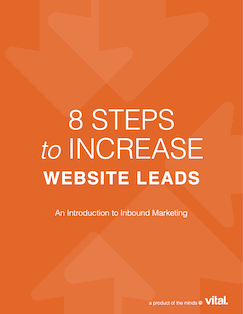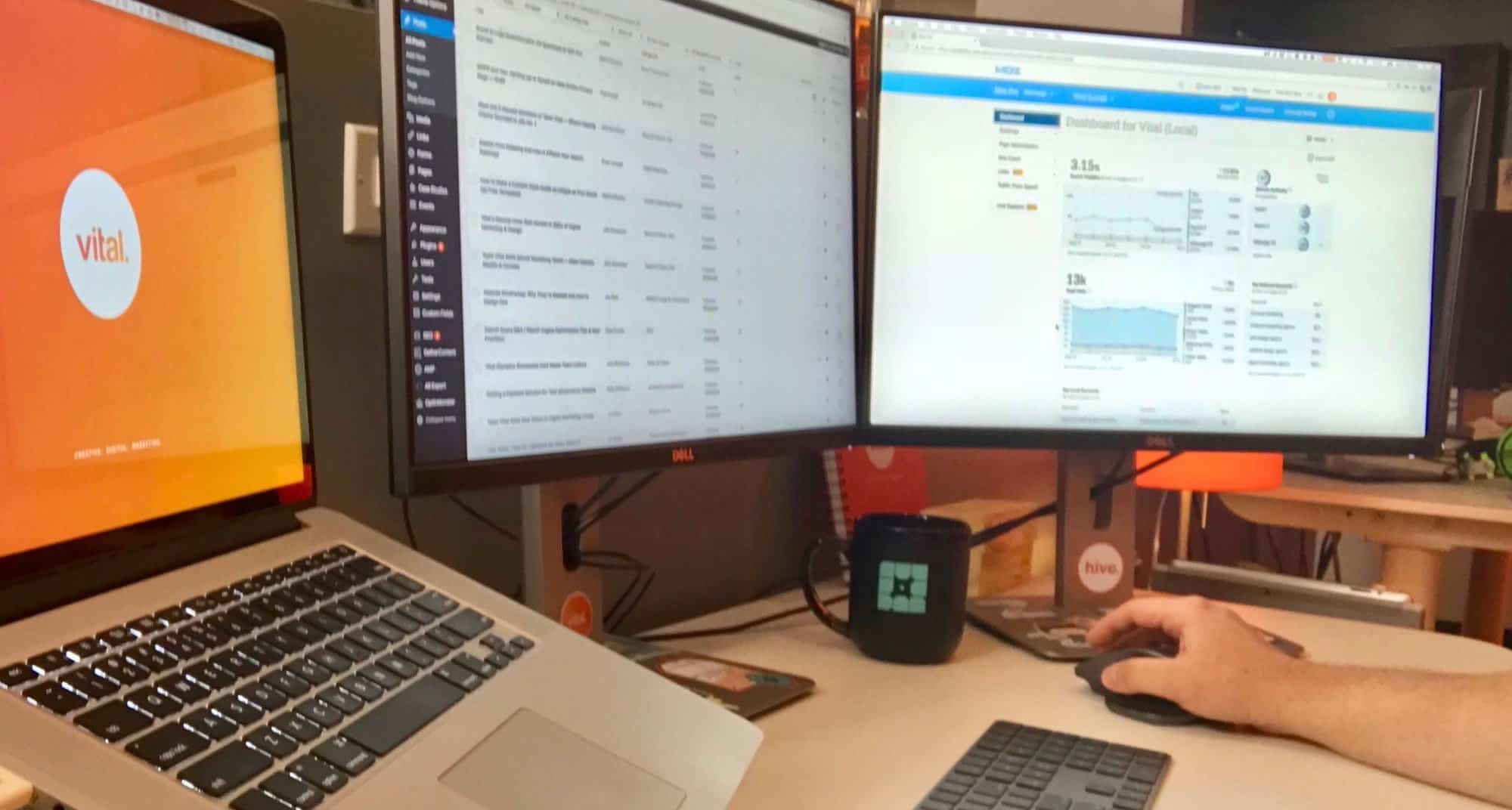If you’ve been thinking that it’s time to add Twitter to your business’ marketing toolkit, inbound marketing company HubSpot has a great (and free) ebook about getting started with Twitter for your business. (Vital has been using Twitter for business since 2008.) It’s packed with great tips, but it’s 40 pages long. Don’t have time for that right now? You’re in luck. We read it and pulled out some of the most important points for you.
Where do I start?
First you have to open an account on Twitter. It’s quick, free and easy. Decide whether you want a business account or a personal account that will promote your business. First, you’ll have to choose a username. If you’re going to be using the site as a business page, your username should be your company name, without any extraneous punctuation or underscore if possible. If you’ll be creating a personal account, choose something professional that uses your real name and possibly integrates your profession or company name (For example: JaneDoe, JDoe, WebDesignJane, VitalJane).
To personalize your page, upload a company logo (for a business page) or a professional, friendly looking photo of yourself (for a personal page). This will be your avatar, and it will appear as a thumbnail next to your tweets. Here, you should also add your full (and real) name and a short bio. The bio should be part personal and part “elevator pitch.” You want to get the word out about your work, but it’s also important to seem like a real person.
Who do I follow?
Check out Twitter’s “Who to Follow” suggestions. They’ll automatically find other Twitter accounts in similar industries and/or geographic areas as you, and suggest that you follow them. Watch for @ replies in tweets from other people you’re following, then check out the account they were tweeting to. That might be an interesting person for you to follow too!
Follow media outlets as well. Many newspapers and magazines have Twitter accounts, and some papers are starting to have individual reporters create personal accounts. Follow your interests and the advice of the people you follow. Also, find out if industry and local bloggers tweet. These can all become great relationships to build on when you have press releases or news tips to share with local publications and sites.
What do I do with it?
Start talking! You can send a public message (an @ reply, pronounced “at reply”) to someone by placing @theirusername somewhere in your tweet. It’s best to put it somewhere in the tweet instead of at the beginning, because when you put it at the beginning of the tweet, the message is only visible to people who follow both you and the person you are messaging. (So write, “Hey there @Vital_Design, what’s up” instead of “@Vital_Design, what’s up?”).
You can use @ replies to send a message, to reply to another person’s tweet with an opinion or idea, or to tag another person in a post that you think they’d be interested in. Don’t just send out links to your own products and company news—join the conversation.
Can I talk about me now?
Twitter is not about shooting advertising out into cyberspace in 140-character bursts. It’s about conversing, collaborating and meeting people. In the past, marketing was “outbound” via print, radio, television. But with modern technology, it’s become easy for people to block out all of that. Twitter is a perfect example of inbound marketing because businesses can make connections with prospective clients or vendors by sharing the type of information those audiences are interested in. This helps companies build relationships before it is time for a sale.
To interact with potential clients and customers, you need to join the conversation. Share links, use @replies and direct messages, and promote other people. Most of all, act like a real person, not a robot. Share amusing tidbits from life or work. Post links to articles that pertain to your industry, or upload a funny (appropriate!) picture from an office event.
How will people know I tweet?
Install a Twitter widget (or at the very least a link to your account) on your company’s homepage so people can follow you right from the site. Make sure that all your email marketing includes a mention of your Twitter account and the URL (twitter.com/username). You should also put it on print materials such as business cards and leave-behinds, and you might even want to include your username in your email signature. When you are at tradeshows, conferences, networking meet-ups or other events, put your Twitter handle on your nametag along with your real name, and collect other people’s Twitter usernames so you can follow them when you get home (or right from your mobile device).
HubSpot’s guide has more detailed info and lots more tips for optimizing Twitter for marketing, and you can find more of our own tips and tricks for social media marketing here. Social media marketing is one of the things we do best, and we’d love to talk to you about how you can use it effectively for your business. You can contact us at 603-766-1902, via our website, on Facebook or–of course–on Twitter.




